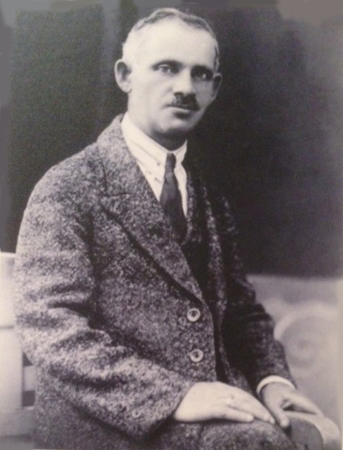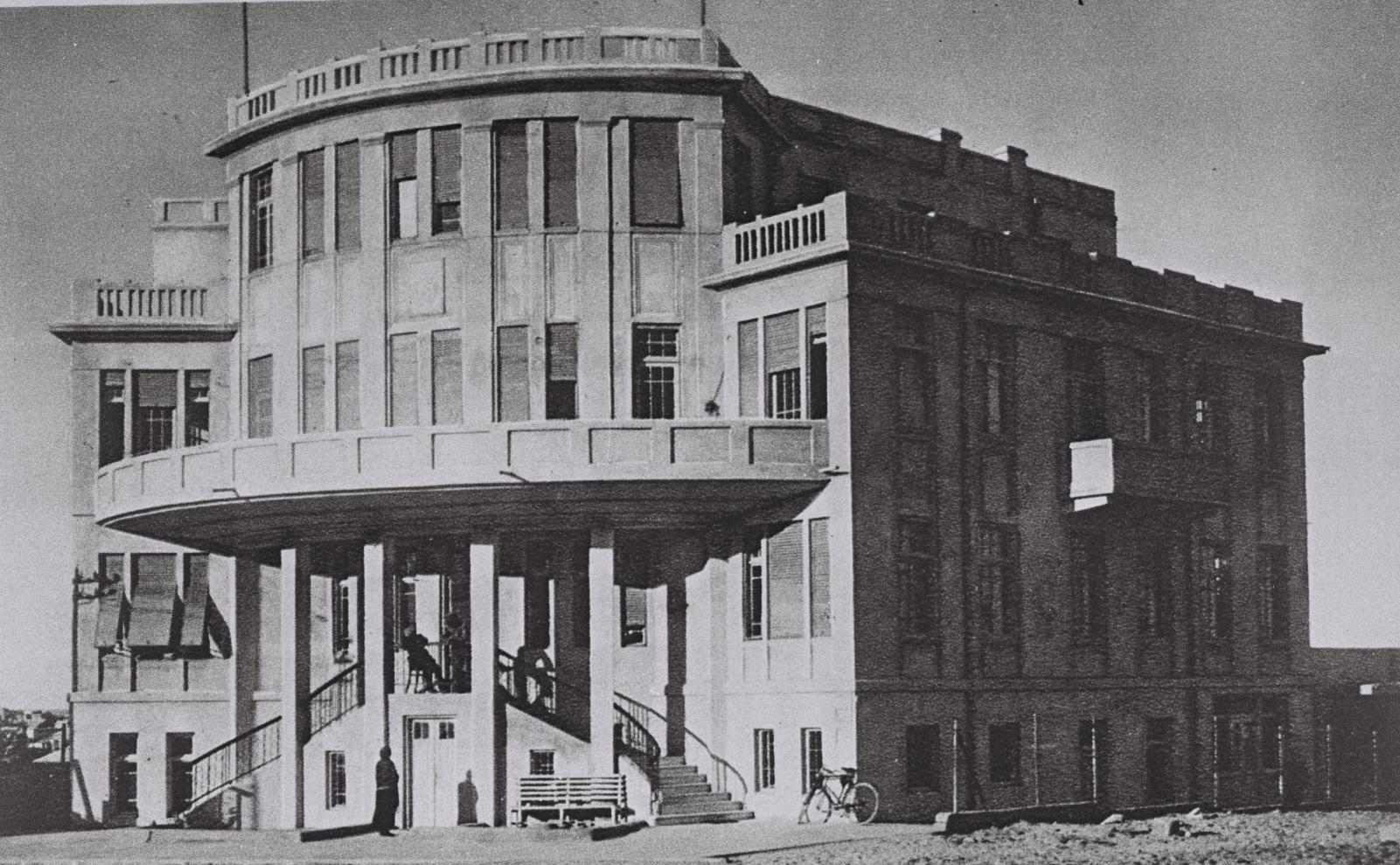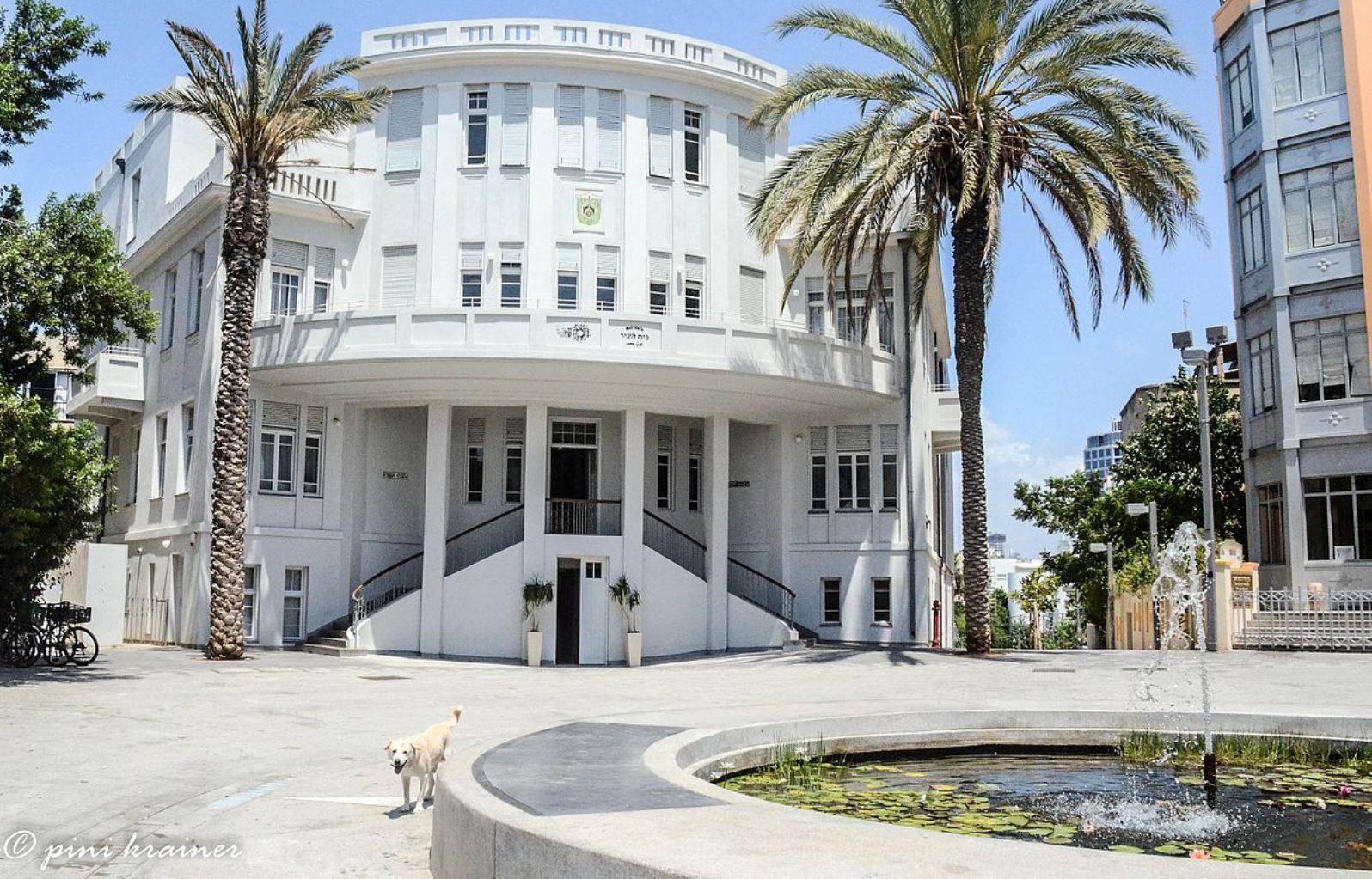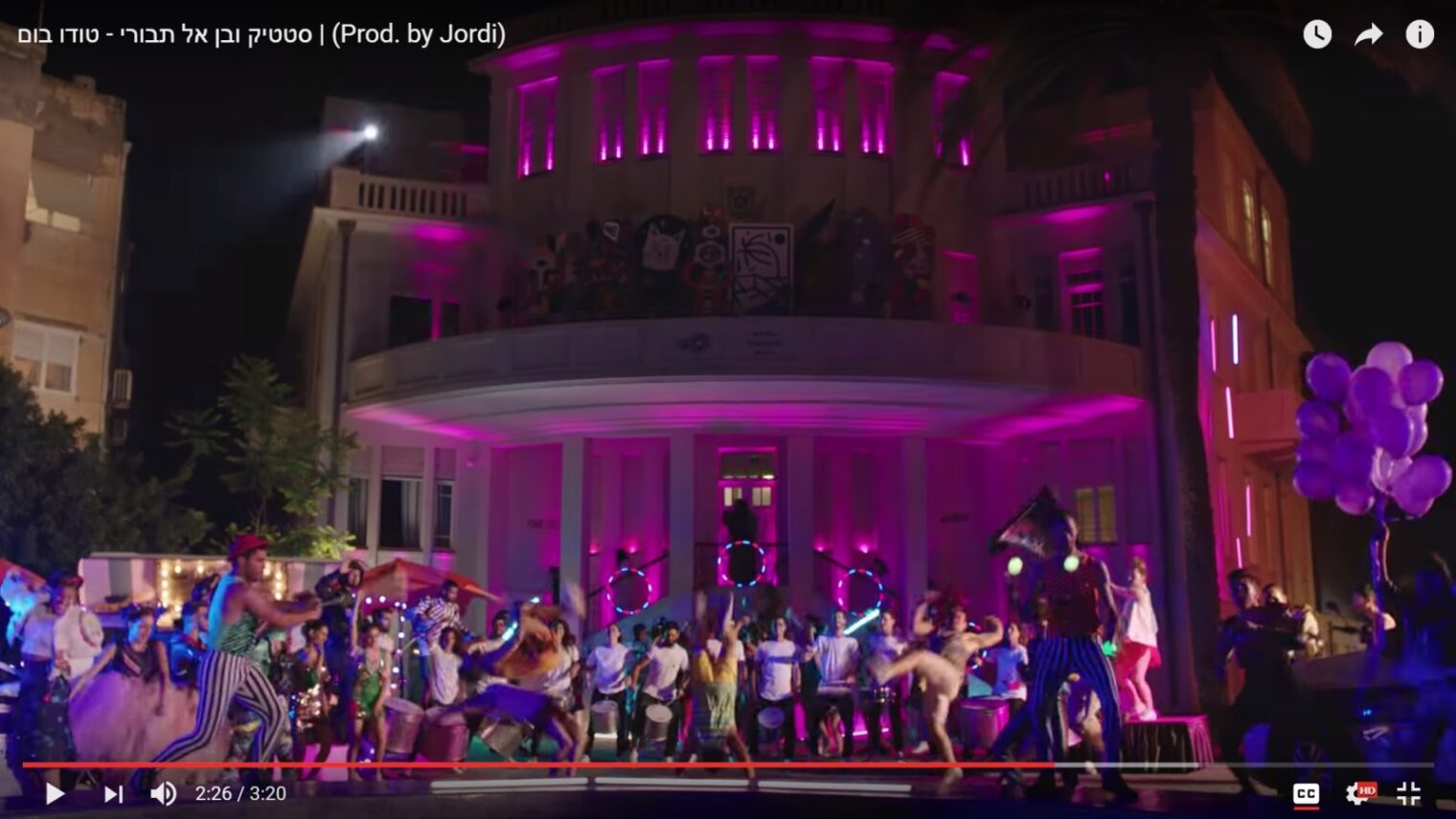Every summer has its ridiculously infectious hit song.
This year, both in Israel and Brazil, it’s “Tudo Bom” by Static and Ben El Tavori, a hybrid Hebrew-Portuguese dance number that (as of today) has amassed more than 24 million views on its official YouTube channel alone, earned the artists a meeting with Ambassador Paulo Cesar Meira de Vasconcellos of Brazil, and gathered a following spearheaded by Felipe Neto, a Brazilian vlogger with over 11 million followers.
What many may not realize, however, is the historic location of the video: the Old Municipality of Tel Aviv on Bialik Street, whose story is emblematic of the city and how it grew.

Originally designed in 1924 by architect and city planner Moshe Czerner (also spelled “Cherner”) as a hotel owned by British Jew Abraham Skora, the building was rented in its entirety in 1925 by Tel Aviv Mayor Meir Dizengoff as a temporary location for the city’s municipal operations until a new city hall would be built.
Like all things Israeli, temporary soon became permanent when, due to an economic downturn, plans for the new city hall were scuttled and in 1928, the city purchased the building from Skora.
For 40 years, the municipality resided on Bialik Street until 1965 when it moved to its current location at Malchei Yisrael Square (now Rabin Square).

Meanwhile, the old building, whose eclectic style had fallen out of fashion, remained unused and unloved until 1972, when it was converted, in part, into a museum dedicated to Tel Aviv history.
Only in 2009, on the eve of the Tel Aviv centennial, was the building renovated from top to bottom, the dull gray façade painted white and a new wing added to the museum. Mayor Dizengoff’s chambers were restored, with furniture and mementos from the period, by historian Doron Luria.

Efrat-Kowalsky Architects said of the project, “The aim of the project was to restore the historical building that was the first civic center of the city. Together with Bialik Square, the building functioned as an urban focal point for ceremonies, celebrations, demonstrations and parades. The Front Façade occasionally served as a balcony for performances and historical events. The aim was not only to restore the historical appearance of the building but mainly to give it another cycle of life and to enable it to function as an active and relevant civic center.”
By that time, a new generation had also rediscovered the beauty of Tel Aviv’s pre-Bauhaus “fantasy” architecture, a style articulated by Czerner not only in the Skora Hotel, but also in planning the Ohel Shem auditorium on Balfour Street (home to the Israel Philharmonic Orchestra until 1957), a magnificent residential building at 44 Balfour, and the equally magnificent residential building at 25 Nachmani Street that is now half of The Norman, rated among the best boutique hotels in the world.

In its own way, “Tudo Bom” is a fitting tribute to the Old Municipality. Not only is the rounded balcony used to welcome the crowd, as it was in days gone by, but the video also features Mayor Ron Huldai who carries on Dizengoff’s vision of Tel Aviv: a world-class city to be enjoyed by all.

















